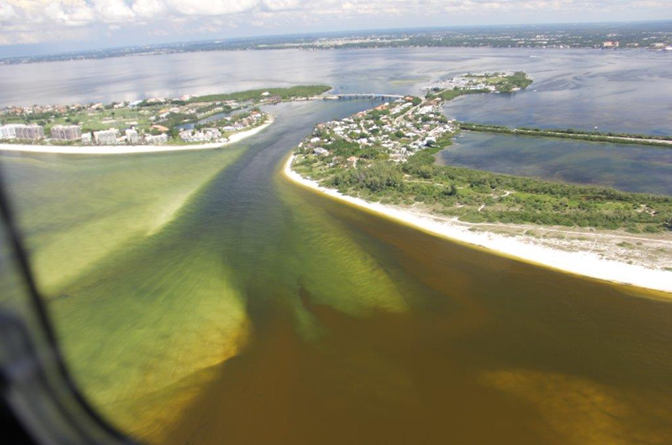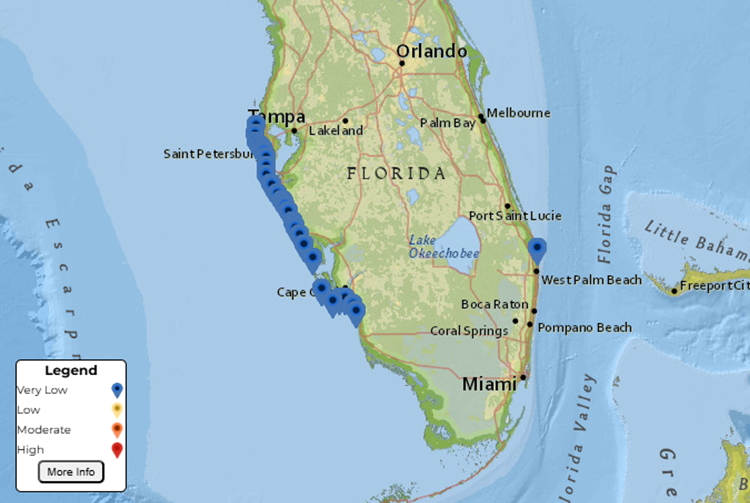
Credit: Mote Marine Laboratory’s Manatee Research Program.
From October 2017 to January 2019, a large and prolonged red tide bloom, commonly known as the “2018 red tide,” caused respiratory distress and displaced recreational activities, heavily impacting the tourism sector along Florida’s Gulf coast. An NCCOS-funded study found that this red tide event — unprecedented in duration, intensity, and impact — caused $2.7 billion in losses, an order of magnitude larger than previous estimates of $318 million.
Red tides in the Gulf are caused by Karenia brevis, which produces toxins that are harmful to human health. Most people experience red tide toxins as minor respiratory irritation — coughing, sneezing, teary eyes, and an itchy throat. However, people with chronic lung problems, like asthma and chronic obstructive pulmonary disease, can have more severe reactions when they breathe in air-borne red tide toxins, which could lead to hospitalization. Red tides can also kill fish and marine mammals and make shellfish dangerous to eat.
Red tide blooms have major impacts on tourism-reliant communities due to changes in tourism behaviors (e.g., shortened or cancelled visits or changes in recreational activities). NOAA’s National Centers for Coastal Ocean Science (NCCOS) has partnered with the Gulf of America Coastal Ocean Observing System (GCOOS) to develop the Red Tide Respiratory Forecast, which lets people see which beaches might be impacted by red tide and at what time of the day. Because red tides and their impacts are localized, the forecast can be used to decide which beaches to visit or avoid on a given day, minimizing the impact of the red tide on outdoor recreation and dining.
Southwest and Southeast Florida rely heavily on both domestic and international tourists throughout the year. The study tracked how many days each month had low, medium, or high levels of the red tide organism in six coastal regions of Florida. Researchers then compared this information with local tourism sales data from the Florida Department of Revenue. The results showed major losses in Southwest Florida ($1.3 billion) and Southeast Florida ($1.4 billion).
The calculated $2.7 billion in losses were due to decreased revenues in hotels, restaurants, bars, and other businesses on the coastline. This new estimate suggests that the magnitude of losses due to red tide events can pose a devastating economic threat to the tourism industry.
The study was funded by a partnership between NCCOS and the Gulf of America Coastal Ocean Observing System. The study and the Red Tide Respiratory Forecast are authorized by the Harmful Algal Bloom and Hypoxia Research and Control Act (33 U.S.C. §§ 4001 et seq.) and the NOAA Authorization Act of 1992, Pub. L. 102-567 (Oct. 29, 1992); sec. 201(c), which directs appropriation for the NCCOS Competitive Research Program to augment and integrate existing NOAA programs to improve predictions of coastal hazards and protect human life and property.
Citation: S. Alvarez, C.E. Brown, M. Garcia Diaz, H. O’Leary, D. Solís. Non-linear impacts of harmful algae blooms on the coastal tourism economy. J. Environ. Manag., 351 (November 2023). (2024), Article 119811, 10.1016/j.jenvman.2023.119811

